BIS(2,4-DINITROPHENYL) OXALATE
- CAS NO.:16536-30-4
- Empirical Formula: C14H6N4O12
- Molecular Weight: 422.22
- MDL number: MFCD00010712
- SAFETY DATA SHEET (SDS)
- Update Date: 2023-06-08 17:06:39
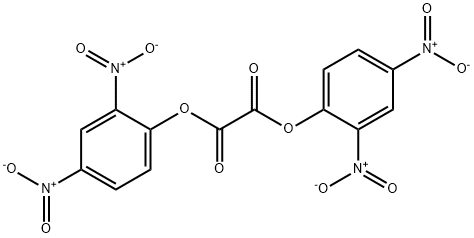
What is BIS(2,4-DINITROPHENYL) OXALATE?
Chemical properties
light yellow powder
The Uses of BIS(2,4-DINITROPHENYL) OXALATE
Bis(2,4-dinitrophenyl) oxalate was used in detection of fluorescent compound dansylalanine in buffer solution by flow injection analysis.
What are the applications of Application
Bis(2,4-dinitrophenyl) oxalate is a chemiluminescence reagent
General Description
Bis(2,4-dinitrophenyl) oxalate (DNPO) is a chemiluminescence reagent. Chemiluminescence produced in the oxidation of DNPO by hydrogen peroxide in the presence of a polycyclic aromatic hydrocarbon was monitored by spectroscopic methods. The kinetics of the imidazole-catalyzed decomposition of DNPO was investigated by the stopped-flow technique.
Properties of BIS(2,4-DINITROPHENYL) OXALATE
| Melting point: | 189-190 °C(lit.) |
| Boiling point: | 605.1±55.0 °C(Predicted) |
| Density | 1.759±0.06 g/cm3(Predicted) |
| storage temp. | −20°C |
| solubility | soluble in Benzene,Toluene |
| form | powder to crystal |
| color | White to Light yellow |
| Stability: | Stable. Incompatible with strong oxidizing agents, strong bases. |
| CAS DataBase Reference | 16536-30-4(CAS DataBase Reference) |
Safety information for BIS(2,4-DINITROPHENYL) OXALATE
| Signal word | Danger |
| Pictogram(s) |
 Flame Flammables GHS02  Exclamation Mark Irritant GHS07 |
| GHS Hazard Statements |
H228:Flammable solids H315:Skin corrosion/irritation H319:Serious eye damage/eye irritation |
| Precautionary Statement Codes |
P210:Keep away from heat/sparks/open flames/hot surfaces. — No smoking. P241:Use explosion-proof electrical/ventilating/lighting/…/equipment. P264:Wash hands thoroughly after handling. P264:Wash skin thouroughly after handling. P280:Wear protective gloves/protective clothing/eye protection/face protection. P302+P352:IF ON SKIN: wash with plenty of soap and water. P305+P351+P338:IF IN EYES: Rinse cautiously with water for several minutes. Remove contact lenses, if present and easy to do. Continuerinsing. P332+P313:IF SKIN irritation occurs: Get medical advice/attention. P337+P313:IF eye irritation persists: Get medical advice/attention. P370+P378:In case of fire: Use … for extinction. |
Computed Descriptors for BIS(2,4-DINITROPHENYL) OXALATE
New Products
4-AMINO-TETRAHYDRO-PYRAN-4-CARBOXYLIC ACID HCL 4-(Dimethylamino)tetrahydro-2H-pyran-4-carbonitrile 4-Aminotetrahydropyran-4-carbonitrile Hydrochloride (R)-3-Aminobutanenitrile Hydrochloride 3-((Dimethylamino)methyl)-5-methylhexan-2-one oxalate 1,4-Dioxa-8-azaspiro[4.5]decane 5-Bromo-2-nitropyridine Nimesulide BP Aceclofenac IP/BP/EP Diclofenac Sodium IP/BP/EP/USP Mefenamic Acid IP/BP/EP/USP Ornidazole IP Diclofenac Potassium THOMAIND PAPER PH 2.0 TO 4.5 1 BOX BUFFER CAPSULE PH 9.2 - 10 CAP SODIUM CHLORIDE 0.1N CVS ALLOXAN MONOHYDRATE 98% PLATINUM 0.5% ON 3 MM ALUMINA PELLETS (TYPE 73) LITHIUM AAS SOLUTION 2-Bromo-1-(bromomethyl)-3-chloro-5-nitrobenzene 2-Bromo-3-nitroaniline N-(3-Hydroxypropyl)-N-methylacetamide 3-Bromo-6-chloropyridazine 4-ethyl-3-nitrobenzoic acidRelated products of tetrahydrofuran


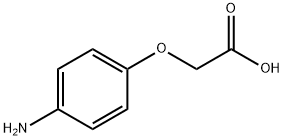
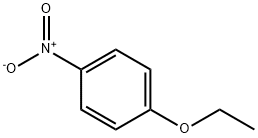
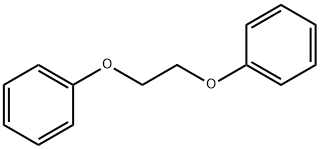
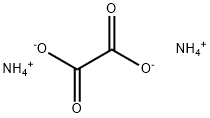
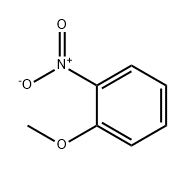
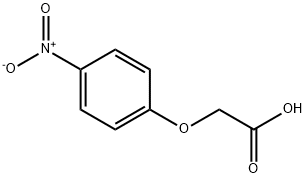
You may like
-
 Bis(2,4-dinitrophenyl) oxalate 95% CAS 16536-30-4View Details
Bis(2,4-dinitrophenyl) oxalate 95% CAS 16536-30-4View Details
16536-30-4 -
 Bis(2,4-dinitrophenyl) oxalate CAS 16536-30-4View Details
Bis(2,4-dinitrophenyl) oxalate CAS 16536-30-4View Details
16536-30-4 -
 1823368-42-8 98%View Details
1823368-42-8 98%View Details
1823368-42-8 -
 2-(3-(tert-butyl)phenoxy)-2-methylpropanoic acid 1307449-08-6 98%View Details
2-(3-(tert-butyl)phenoxy)-2-methylpropanoic acid 1307449-08-6 98%View Details
1307449-08-6 -
 Ethyl 3-(furan-2-yl)-3-hydroxypropanoate 25408-95-1 98%View Details
Ethyl 3-(furan-2-yl)-3-hydroxypropanoate 25408-95-1 98%View Details
25408-95-1 -
 2-Chloro-5-fluoro-1-methoxy-3-methylbenzene 98%View Details
2-Chloro-5-fluoro-1-methoxy-3-methylbenzene 98%View Details
1805639-70-6 -
 1784294-80-9 98%View Details
1784294-80-9 98%View Details
1784294-80-9 -
 Lithium ClavulanateView Details
Lithium ClavulanateView Details
61177-44-4
Statement: All products displayed on this website are only used for non medical purposes such as industrial applications or scientific research, and cannot be used for clinical diagnosis or treatment of humans or animals. They are not medicinal or edible.